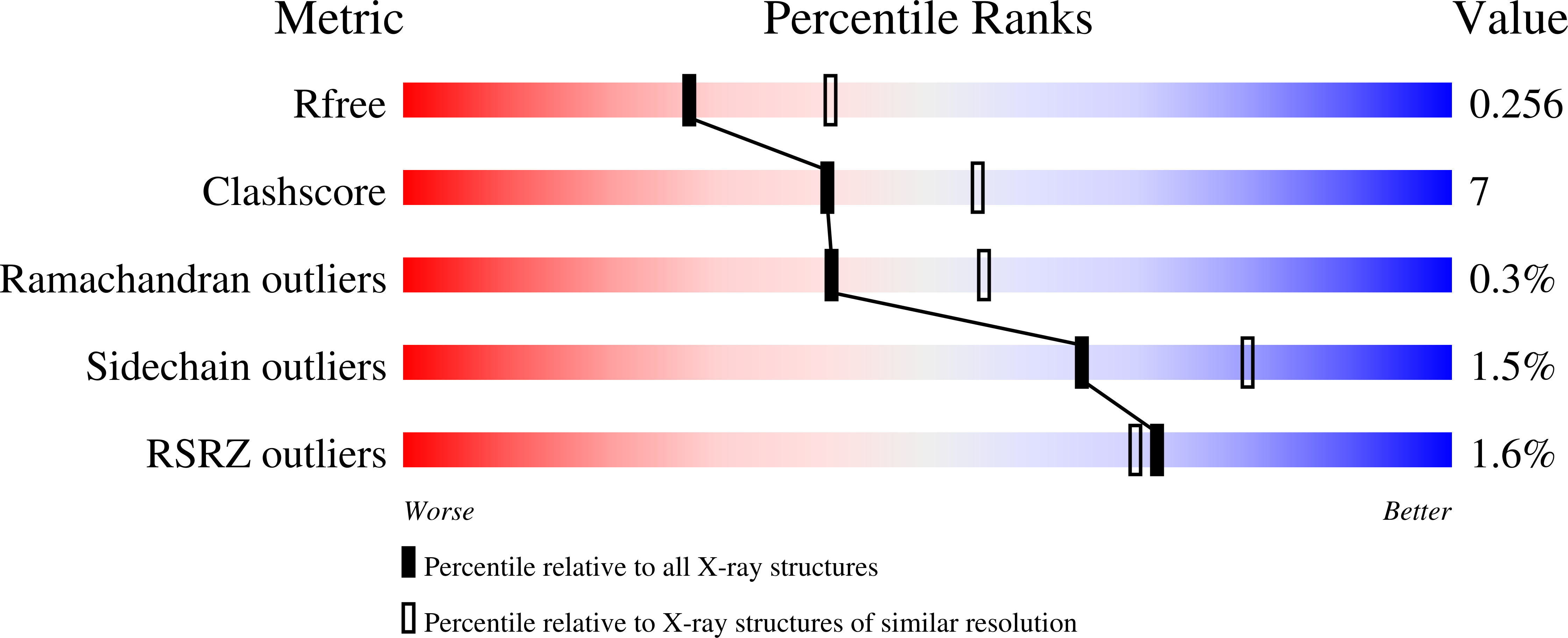Biochemical and structural characterisation of dehydroquinate synthase from the New Zealand kiwifruit Actinidia chinensis.
Mittelstadt, G., Negron, L., Schofield, L.R., Marsh, K., Parker, E.J.(2013) Arch Biochem Biophys 537: 185-191
- PubMed: 23916589
- DOI: https://doi.org/10.1016/j.abb.2013.07.022
- Primary Citation of Related Structures:
3ZOK - PubMed Abstract:
One of the novel aspects of kiwifruit is the presence of a high level of quinic acid which contributes to the flavour of the fruit. Quinic acid metabolism intersects with the shikimate pathway, which is responsible for the de novo biosynthesis of primary and secondary aromatic metabolites. The gene encoding the enzyme which catalyses the second step of the shikimate pathway, dehydroquinate synthase (DHQS), from the New Zealand kiwifruit Actinidia chinensis was identified, cloned and expressed. A. chinensis DHQS was activated by divalent metal ions, and was found to require NAD(+) for catalysis. The protein was crystallised and the structure was solved, revealing a homodimeric protein. Each monomer has a NAD(+) binding site nestled between the distinct N- and C-terminal domains. In contrast to other microbial DHQSs, which show an open conformation in the absence of active site ligands, A. chinensis DHQS adopts a closed conformation. This is the first report of the structure of a DHQS from a plant source.
Organizational Affiliation:
Biomolecular Interaction Centre and Department of Chemistry, University of Canterbury, PO Box 4800, Christchurch 8140, New Zealand.





















